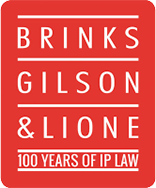Standard essential patents (“SEPs”) are patents claiming an invention that must be used to comply with one or more interoperability standards, such as the WCDMA and LTE telecommunications standards and the 802.11 WiFi standard. Given the “essential” nature of these technologies, SEPs present special challenges to regulatory bodies, courts and negotiating parties alike. Because a single SEP can be used to block a party from implementing a given standard, SEP could potentially be used by patentees to exclude competitors from the market or lead to the exclusion of standards-implementers from the marketplace. For this reason, standard setting organizations (“SSOs”) have required their members to make their SEPs available for license to any standards implementer on Fair, Reasonable and Non-Discriminatory (“FRAND” or “RAND”) terms.
In valuing, licensing, or litigating SEPs, determining a FRAND rate is easier said than done. This is particularly the case when valuing patent portfolios, which may contain hundreds or even thousands of declared SEPs. For those IP lawyers who practice in the wireless industry, one pending case in the Central District of California has been of great interest: TCL Communication Holdings, Ltd. v. Ericsson, Inc. et al., No. 8:14-cv-00341-JVS-DRM (C.D. Cal.). On November 8, 2017, Judge Selna issued a 115-page opinion under seal. A redacted version became available to the public on December 21, 2017.
Background
TCL Communication Technology Holdings, Ltd. (and its subsidiaries) manufactures and globally distributes mobile phones. As summarized in the opinion, in 2007, TCL entered into 2G licenses with Ericsson which called for a seven-year license term. In 2011, TCL and Ericsson began negotiations over a 3G license. In 2013, when TCL started selling 4G-compliant products, Ericsson offered 4G rates to TCL, but no license was consummated because the parties did not agree on license terms.
Litigation ensued. Between October 2012 and late 2014, Ericsson filed several lawsuits against TCL and/or its affiliates in several different jurisdictions. In March 2014, just prior to the expiration of the TCL-Ericsson 2G license, TCL filed suit in the Central District of California seeking a declaratory judgment that Ericsson had failed to offer a license on FRAND terms, as well as a determination of the FRAND rates for Ericsson’s 2G, 3G, and 4G portfolios. In May 2015, TCL filed for an anti-suit injunction, to enjoin Ericsson from prosecuting any pending or future litigations alleging infringement of its 2G, 3G, or 4G patents during the pendency of the FRAND proceedings in the Central District of California. The Court granted the anti-suit injunction once Ericsson withdrew its opposition after TCL agreed to be bound by the court’s determination of FRAND terms and conditions for a worldwide portfolio license, including payments for past unlicensed sales.
FRAND Determination
The parties submitted extensive evidence – including reports from technical and economic experts – supporting their assessment of the FRAND rates for each of Ericsson’s 2G, 3G, and 4G portfolios. The parties advanced opposing viewpoints of the proper methodology for determining the rates. TCL presented a “top-down” approach, which set a total, aggregate royalty burden for each standard and apportioned that total burden based on Ericsson’s share of the patents within each standard. Ericsson, in contrast, asserted an “ex-standard” approach, in which the value of Ericsson’s patents was determined independent from the value of the standard.
In setting a FRAND rate, the court utilized a modified version of TCL’s top-down approach and adjusted that rate to account for comparable licenses and the geographic distribution of sales in light of Ericsson’s portfolio. The court acknowledged that the top-down approach is not perfect, but nonetheless had merit. The court gave weight to the commitments and other statements made by Ericsson and other SEP holders prior to the adoption of the standard, which it found reduced the risk that the aggregate value of licenses to individual SEP owners exceeds the aggregate value of the standard, a concept known as “royalty stacking.”
First, the court determined the total aggregate royalty from each standard. The court found on the record before it that 5% is an appropriate number to use for the total aggregate royalty for 2G and 3G. For 4G, the court applied both 6% and 10% as alternative measures of the aggregate royalty burden from SEPs.
Second, Judge Selna analyzed the proportion of SEPs owned by Ericsson. This required two steps: (a) determining the total number of industry-wide SEPs and (b) the total number of Ericsson SEPs. Relying on technical analysis from both parties’ experts, the court adopted the following totals for the number of U.S. patents actually essential to each standard: 365 for 2G, 953 for 3G, and 1481 for 4G. The court applied the estimates of both parties as to the total number of Ericsson U.S. SEPs to calculate Ericsson’s percentage of U.S. patents essential to each standard.
Third, Judge Selna considered expert testimony related to the technical strength of Ericsson’s patents. Specifically, TCL argued that Ericsson’s proportional rate should be adjusted to reflect the technological value of the patents in its portfolio. Although the court found some value in the technical analysis, it determined that certain steps in TCL’s analysis were fatally flawed and, as such, did not accept the final numbers of TCL’s experts.
Fourth, the court analyzed the strength of Ericsson’s portfolio outside the United States because “a global patent rate that does not account for differences in national patent strength provides the SEP owner a royalty based on features that are unpatented in many jurisdictions.” The caveat is that, because patents can be enforced where a product is manufactured, “the patent portfolio strength in the country where the products are made effectively sets a global floor for the manufacturer’s FRAND rate.” Because TCL manufactures its products in China, the court determined that Ericsson’s portfolio in China set the baseline rate of a worldwide license to TCL. Based on this logic, Judge Selna determined that a three-region running royalty rate was appropriate, utilizing separate royalties for the U.S., Europe, and the rest of the world. However, because Ericsson’s 4G portfolio was found to be stronger in China than in Europe, the 4G rate determined by the court included only two jurisdictions: one for the U.S. and one applied to sales in the rest of the world.
Finally, the court undertook an analysis of licenses that it found to be comparable, relying on expert testimony unpacking the stated rates in each license in order to determine an effective rate. To the extent an unpacked rate could be reliably determined, the rate was factored into Judge Selna’s analysis.
Based on the above steps, Judge Selna determined that the following were appropriate FRAND rates for a license to Ericsson’s portfolios of SEPs:
| Standard | U.S. | Europe | Rest of World |
| 2G | 0.164% | 0.118% | 0.090% |
| 3G | 0.300% | 0.264% | 0.224% |
| 4G | 0.450% | 0.314% | 0.314% |
Although the court found that the judicially-determined FRAND rates were lower than the rates proposed by Ericsson during license negotiations, Judge Selna found that Ericsson had not breached its FRAND obligations.
In addition to an ongoing royalty on the judicially-determined FRAND rates, the court determined that Ericsson was entitled to a release payment of $16,499,071 for past, unlicensed sales.
Ericsson has appealed the judgment to the Federal Circuit.
Takeaways
Along with the UK High Court’s decision in Unwired Planet v. Huawei, the TCL decision provides licensors, licensees and future litigants with another set of data points and methodologies for determining a FRAND rate for a portfolio of SEP. It should be emphasized that Judge Selna’s decision was based on the facts before it and the court’s methodology will likely be the subject of appellate review.
Moreover, the TCL decision demonstrates that U.S. District Courts provide another venue, in addition to arbitration or the UK High Court, to which parties can turn to resolve this key issue in very sizable commercial transactions.



 />i
/>i

